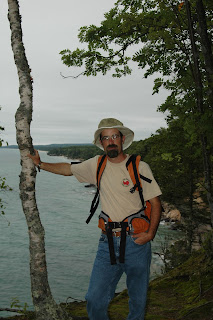 |
| Singing Yellow Warbler |
For the May 4th and May 11th shows, we covered topics in animal communication. In the first installment, we covered the definition of animal communication and channels through which animals communicate (e.g. visual, auditory, chemical). (No podcast was able to be posted of this show… sorry!).
 |
| Photuris firefly preying on another firefly species |
In the May 11th episode
(download podcast here), we continued our discussion of animal communication with the evolution of animal signals. Download the podcast to learn about competing theories for the function of communication, how raw materials for communication become ritualized over time, and some factors that shape the evolution of signals. We concluded with dishonesty in signaling, as represented by the female
Photuris firefly, which mimics the flashes of females from another firefly species. The poor, unwitting males, thinking they’re coming in for some sweet love, are instead captured and devoured by the deceitful
Photuris!
Some news stories from the two episodes...
 |
| American Alligator |
Some of the critters we heard from over the two weeks included the Saddleback Tamarin, Wild Turkey, and American Alligator (pictured right).
My goodness we heard some rockin' music during these episodes, including tracks from artists such as Cat Power, Audible, Television, The Chemical Brothers, The Big Sleep, Cut Copy, LCD Soundsystem, Thelonius Monk, and more!
















